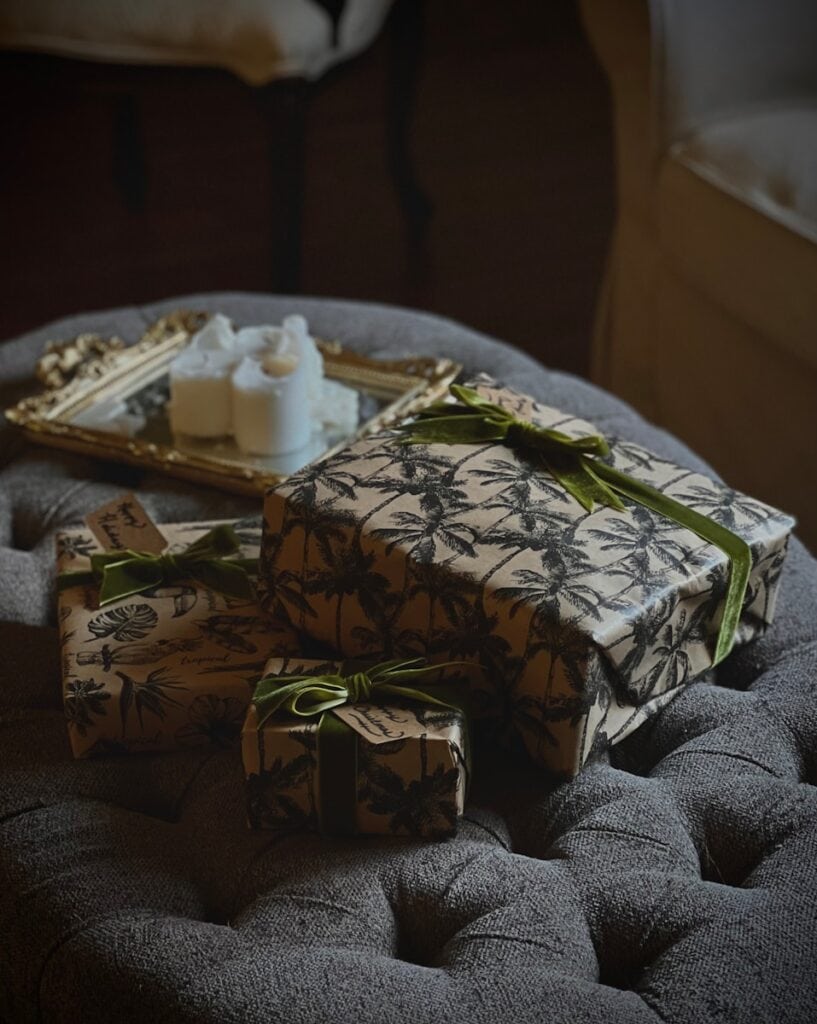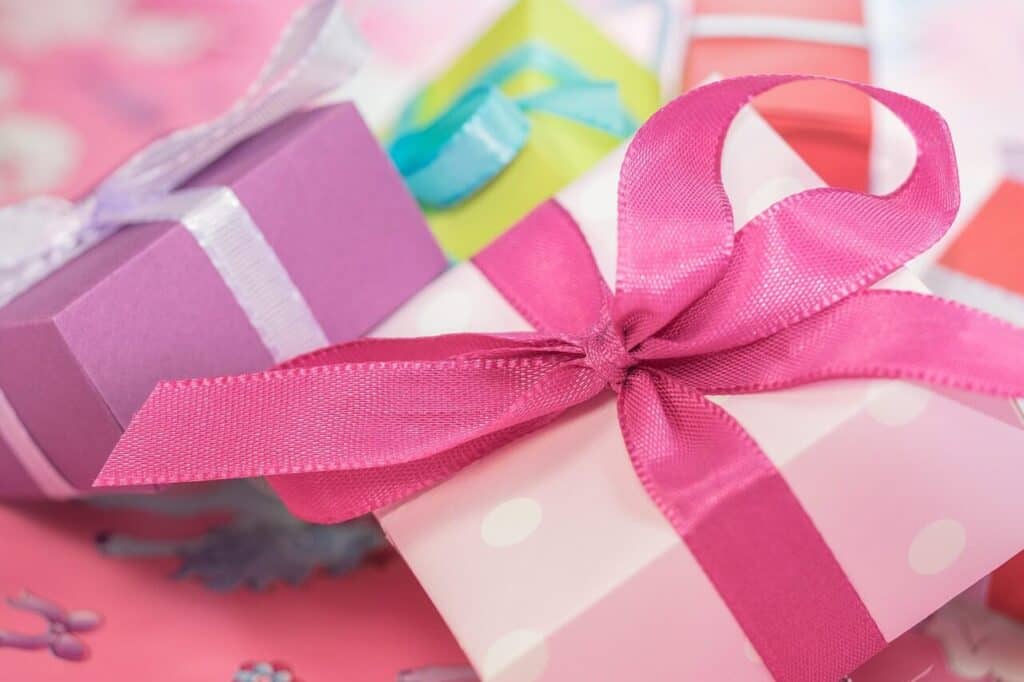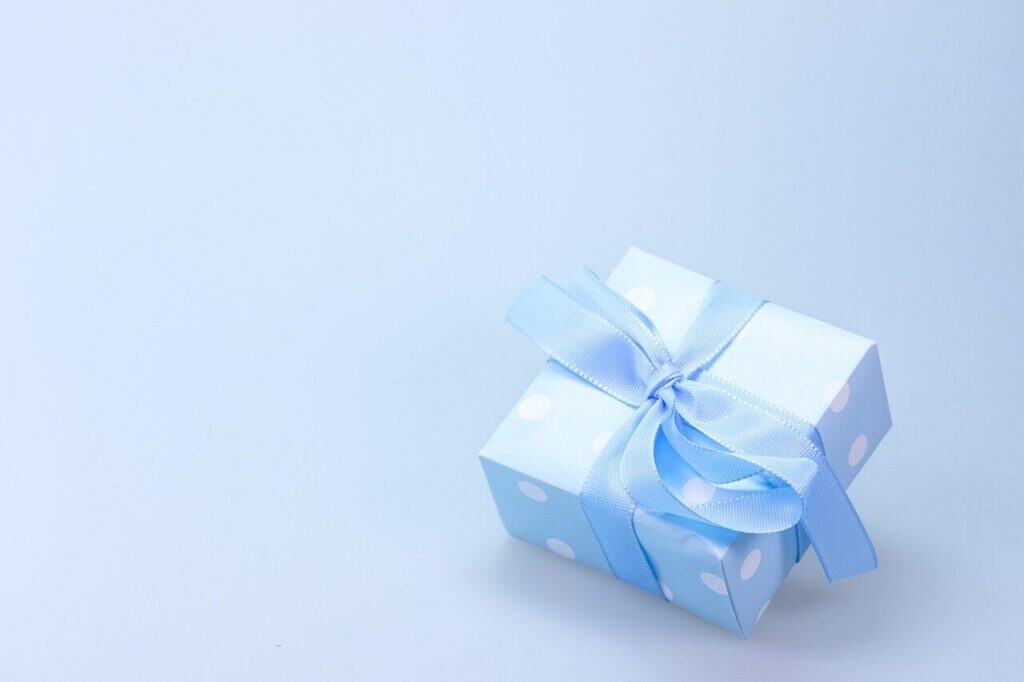The Ultimate Guide to Individual Wrapping: From Purchase to Presentation
You’ve put your heart into creating the perfect product. Now comes the final, crucial step: presenting it to the world.
Individual wrapping is much more than just protection. It’s the first real contact a customer has with what you’ve made.
Good wrapping shows quality. It keeps things clean. And it turns a simple item into something that feels special.
This guide walks you through every step. We’ll cover picking materials, learning wrapping techniques, using packaging for your brand, thinking about the environment, and making smart buying choices.
Understanding Your Options
Think of this as your material library. Knowing what each wrapping option can do is the first step to making the right choice for your products.
We’ll look at the most common materials. From clear, crisp plastics to beautiful, earth-friendly papers. Understanding what makes each one different will help you pick the perfect wrap for any project.
Popular Wrapping Materials
Polypropylene (PP) and Cello bags give you that classic, crystal-clear look that’s perfect for stores. They feel crisp and let people see your product clearly.
Glassine and Wax Paper work great for food items. They resist grease and give a see-through, handmade feel while protecting against moisture and oils.
Foil wrappers are perfect for chocolates and caramels. They block light and odors really well. Plus they add a touch of luxury and hold their shape when you twist them.
Shrink wrap gives you a special seal that shows if someone has tampered with it. When you apply heat, it fits perfectly around your product’s shape. Works great for a single bar of soap or a small gift basket.
Eco-friendly plastics like PLA offer a compostable choice instead of regular petroleum-based options. You get a clear look with a smaller environmental impact.
Fabric and Beeswax Wraps are the reusable, handmade choice. They’re perfect for expensive items or brands that want to show they care about sustainability and craftsmanship.
Comparative Material Analysis
To make your choice easier, we’ve put the key features of these materials into a helpful table. Use this as a quick reference guide.
Material | Key Features | Best For… | Pros | Cons | Eco-Friendliness Score (1-5) |
Polypropylene (PP) | High clarity, crisp feel, durable | Cookies, candy, art prints, stationery | Professional look, moisture barrier, affordable | Not breathable, fossil-fuel based | 1 |
Glassine | Translucent, smooth, air/grease resistant | Baked goods, fatty foods, stamps, soaps | Food-safe, biodegradable, elegant look | Not fully transparent, can be brittle | 4 |
Wax Paper | Coated paper, grease/moisture resistant | Sandwiches, taffy, cheese, lining boxes | Inexpensive, non-stick, compostable (if soy-based) | Not sealable with heat, opaque | 3 |
Aluminum Foil | Malleable, light/odor barrier | Chocolate, candy bars, warm foods | Excellent barrier, holds shape well | Tears easily, not microwavable | 2 (Recyclable if clean) |
Shrink Wrap (PVC/Polyolefin) | Shrinks with heat for a tight seal | Baskets, soap bars, software boxes | Tamper-evident, conforms to any shape | Requires heat gun, environmental concerns (PVC) | 1 |
PLA (Polylactic Acid) | Clear “bioplastic” made from plant starch | Cold foods, single-use items, candy | Commercially compostable, plant-based | Low heat tolerance, requires industrial composting | 4 |
The Decision-Making Guide
Now let’s turn that material knowledge into a practical choice. Picking the perfect wrap means balancing what your product needs with what your brand wants to achieve.
This section works like a personal consultation. It guides you through the key things to think about. We’ll help you avoid common mistakes and choose a wrapping solution that saves you time and money.
Key Factors to Consider
Start by looking at what your product physically needs. Does it need protection from moisture to stay crisp? Is it fragile and needs cushioning? Is it oily and might stain regular paper?
Food safety can’t be compromised for edible products. Always make sure your chosen material is “food-grade” or “FDA-approved.” This means the material has been tested and found safe for direct contact with food, preventing harmful chemicals from getting into the food.
Think about your brand’s look. Are you going for a rustic, natural feel? A modern, clean appearance? Or a luxurious, high-end presentation? Your wrapping plays a big part in this visual identity.
Consider how easy it is for customers to use. Does the package need to be resealable? Should it be easy to open? The customer experience starts before they even taste or use the product.
Finally, look at your budget. Calculate the cost per piece to understand the financial impact. While cheaper wrap might seem tempting, it may not give your product the protection or presentation it deserves.
Matching Wrap to Product
This table works as a cheat sheet for some of the most common product types. It matches them with our top recommendations for wrapping materials and sealing methods.
Product Category | Top Recommendation | Sealing Method | Pro Tip for Presentation |
Crisp Cookies & Biscuits | Polypropylene Bags | Heat sealer or twist tie | Use a bag with a gusset to allow cookies to stand upright. |
Brownies & Oily Bakes | Glassine or Wax Paper | Folded and secured with a sticker/label | A branded sticker not only seals but adds a professional touch. |
Handmade Soaps | Shrink Wrap or Paper Bands | Heat gun or adhesive | For “curing” soaps, a paper band allows airflow while still branding the item. |
Artisan Chocolates & Truffles | Aluminum Foil or Foil-Lined Paper | Hand-twisted or folded | The crinkle of foil enhances the premium, sensory experience. |
Jewelry & Small Crafts | Small Polypropylene Bags or Fabric Pouches | Self-sealing adhesive or drawstring | Place on a card backing before inserting into a clear bag for a retail-ready look. |
Mastering the Craft
With your materials chosen, it’s time to perfect your technique. Clean, consistent wrapping shows professionalism and care.
These step-by-step guides give you clear instructions for the most common and effective wrapping methods. We’ll describe the process with details that come from real experience, helping you build skill and confidence.
The Professional Pleat
This technique works perfectly for round objects like cookies, bath bombs, or bars of soap. It creates an elegant, gathered top.
First, center your object on a square sheet of cellophane or glassine paper.
Gather the material upwards, bringing it together above the center of your item.
Start creating small, 1-inch overlapping pleats with your thumb and forefinger. Work your way around the circle. You’ll feel the material become tight as you create a neat, clean gather.
Once fully pleated, secure the gathered neck tightly with a pre-cut ribbon or twist tie. Twist it several times for a secure hold.
The Classic Butcher’s Fold
For square or rectangular items like brownies, fudge, or small art prints, the butcher’s fold gives you a sharp, clean seal without tape showing on the outside.
Place your item upside down in the center of your wax or glassine sheet.
Bring the two long sides of the paper together above the item. Make sure the edges meet perfectly.
Fold these matched edges down together in a neat 1-inch fold. Keep folding down like this until the paper is snug against the item’s surface.
Make sharp creases on the top fold and the side edges. This is what makes it look professional.
You’ll now have triangular flaps on each end. Fold the top corner down, then the bottom corner up, and finally fold the entire triangular flap underneath the package. A branded sticker can then go over the final fold to secure it.
Using a Heat Sealer
For a truly airtight and professional finish on polypropylene or PLA bags, an impulse heat sealer is an invaluable tool.
First, choose your sealer. Impulse sealers heat only when the arm is closed and work great for most small businesses. Constant heat sealers are better for thicker materials like Mylar.
Always test your sealer’s temperature setting on a scrap piece of your bag. Too low won’t create a strong seal, while too high will melt the bag.
Slide the open end of your bag onto the sealing platform. Make sure the material is flat and free of wrinkles.
Press the arm down firmly. For most impulse sealers, a light will show when the heating cycle is active. Hold for 2-3 seconds until the light turns off.
Release the arm and check the seal. It should be a clean, consistent, and clear line. Give it a gentle tug to make sure it’s secure.
Branding and Presentation
Your individual wrapping is more than protection—it’s a marketing investment. It’s your first and best chance to make an impression.
Let’s change how you think about this. Every wrapped item is a chance to strengthen your brand and create a memorable customer experience.
Your Wrapper as a Billboard
A simple, well-designed sticker is the most powerful tool in your branding toolkit. It can show your logo, ingredient list, website, and social media handles, all in one small space.
As you grow, you might consider custom-printed cellophane or paper. While this often means minimum order quantities (MOQs), it offers a seamless, high-end look that can set your brand apart.
The right ribbon or twine completes the look. Rustic jute twine goes well with an earthy, handmade brand, while sleek satin ribbon suggests luxury and elegance. Being consistent is key.
A Micro-Unboxing Experience
Think about the small details that create a memorable moment for your customer.
Using multiple materials adds depth and makes things feel more valuable. For example, wrap a brownie first in wax paper, then secure it with a printed paper band.
Consider adding a small insert. A tiny business card with a discount code or a simple “Thank You” note can create a powerful connection.
Keep a consistent color scheme across all your packaging elements. Your wrapping, stickers, and ribbons should all feel like they belong to the same brand family.
A final, unexpected touch can leave a lasting impression. A sprig of dried lavender tucked into the twine of a soap wrap, or a custom-stamped wax seal on the back of a folded package, elevates the entire experience.
The Sustainable Wrapper’s Dilemma
The desire to be eco-friendly is strong. But navigating the world of sustainable packaging can be confusing and costly.
We’ll give you a balanced, realistic guide to making greener choices. This isn’t about being perfect, but about making practical, informed decisions that match your values and your business reality.
Deconstructing “Eco-Friendly”
First, let’s clarify the terms. “Recyclable” means a material can be reprocessed into new products, but only if it’s clean and sent to the right facility.
“Biodegradable” means a material can be broken down by microorganisms over time. But this can take years and may leave tiny plastic pieces behind.
“Compostable” is a more regulated term. It means a material will break down into natural elements in a composting environment within a specific timeframe. It’s important to know the difference between home compostable and commercially compostable (requiring industrial facilities).
The scale of the issue is significant. The EPA estimates that containers and packaging make up a major portion of municipal solid waste, showing how important it is to make thoughtful choices.
A Greener Wrapping Framework
We recommend a “Good, Better, Best” approach to make sustainability more accessible.
A good start is choosing materials that are widely recyclable in most city programs. This includes clean aluminum foil and some rigid plastics (check local guidelines by looking for the resin identification code).
A better option is to use paper-based, biodegradable materials. Glassine and uncoated paper, especially those certified by the Forest Stewardship Council (FSC), are excellent choices.
The best option involves certified compostable materials like PLA, provided you can teach your customers how to dispose of them properly in industrial composting facilities. For high-value items, reusable options like small fabric pouches or beeswax wraps offer a premium, zero-waste solution.
Communicating Your Choices
Don’t let your sustainable efforts go unnoticed. Tell your customers why you chose a particular material.
This builds brand loyalty and helps make sure the packaging gets disposed of correctly.
Add a simple, clear statement to your label or website. For example: “Our clear bags are made from plant-based PLA and are commercially compostable,” or “This paper band is made from 100% recycled content and is fully recyclable.”
Smart Sourcing and Storage
The final piece of the puzzle is buying and managing your supplies efficiently. Smart sourcing saves money, while proper storage prevents waste and keeps quality high.
This section gives you direct, money-saving tips and organizational strategies to handle the final logistics of individual wrapping.
Where to Buy Supplies
Local craft and restaurant supply stores are great for immediate needs. You can see materials in person and avoid shipping costs, but the selection may be limited and prices higher per piece.
Online marketplaces like Etsy and Amazon offer huge variety and work well for buying small quantities to test new materials. However, quality can vary between sellers.
For established businesses, specialist packaging wholesalers like Uline or Paper Mart offer the best price-per-piece. The tradeoff is often high minimum order quantities (MOQs) and the need for significant storage space.
Bulk vs. Small-Batch
Deciding how much to buy is a key strategic decision. This table breaks down the cost-benefit analysis of buying in small batches versus in bulk.
Purchase Volume | Pros | Cons | Best For… |
Small-Batch (e.g., 100-count packs) | Low upfront cost, allows for experimentation, less storage space needed. | Higher cost-per-piece, risk of running out suddenly. | Hobbyists, brand new businesses, one-off events. |
Bulk/Case (e.g., 1000+ count) | Significantly lower cost-per-piece, ensures supply consistency, reduces reordering frequency. | High upfront cost, requires significant storage space, risk of waste if product line changes. | Established small businesses, high-volume sellers, large-scale event planners. |
Proper Storage for Quality
Protect your investment with proper storage. Following these simple rules will keep your supplies in perfect condition.
- Keep all paper and plastic wraps away from direct sunlight. UV rays can cause color changes and make plastics brittle.
- Store supplies in a cool, dry place. Humidity can damage paper and ruin the adhesive on labels.
- Use flat file drawers for sheets of paper or hang rolls of cellophane to prevent permanent creases and wrinkles.
- Keep your adhesive stickers and labels in their original packaging or in sealed bags to protect the adhesive from drying out.
Conclusion
You’ve traveled from understanding raw materials to mastering the art of presentation. We’ve covered how to choose, use, brand, and source your individual wrapping supplies.
Remember that thoughtful wrapping isn’t an expense—it’s a powerful and achievable tool. It protects your product, elevates your brand, and delights your customer.
With this knowledge, you’re now equipped to transform your great product into an unforgettable experience.
- FDA Food Labeling Guide https://www.fda.gov/regulatory-information/search-fda-guidance-documents/guidance-industry-food-labeling-guide
- EPA Packaging Guidance https://iwaste.epa.gov/guidance/packaging
- FDA Food Ingredients & Packaging https://www.fda.gov/food/food-ingredients-packaging
- FTC Fair Packaging and Labeling Act Regulations https://www.ftc.gov/legal-library/browse/rules/fair-packaging-labeling-act-regulations-under-section-4-fair-packaging-labeling-act
- WHO Guidelines on Packaging for Pharmaceutical Products https://cdn.who.int/media/docs/default-source/medicines/norms-and-standards/guidelines/regulatory-standards/trs902-annex9.pdf
- FDA Small Entity Compliance Guide for Manufacturing & Packaging https://www.fda.gov/regulatory-information/search-fda-guidance-documents/small-entity-compliance-guide-current-good-manufacturing-practice-manufacturing-packaging-labeling
- Sustainable Packaging Coalition https://sustainablepackaging.org/
- SafetyCulture Food Packaging Regulations Guide https://safetyculture.com/topics/product-packaging/food-packaging-regulations/
- UPS Hazardous Materials Packaging Regulations https://www.ups.com/us/en/support/shipping-support/shipping-special-care-regulated-items/hazardous-materials-guide/shippers-responsibilities/hazardous-materials-packaging-regulations
- FDA How to Start a Food Business https://www.fda.gov/food/food-industry/how-start-food-business








